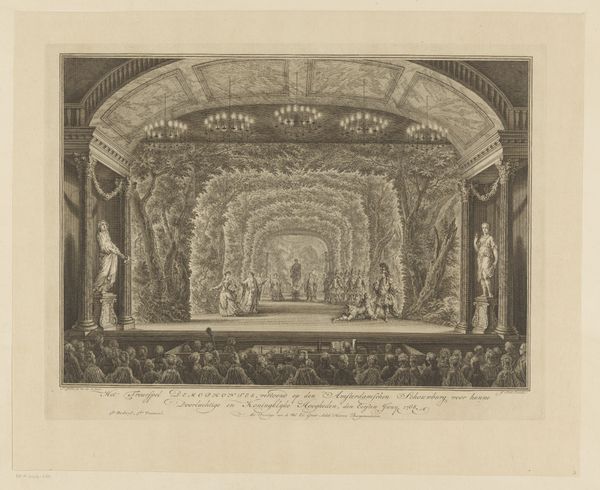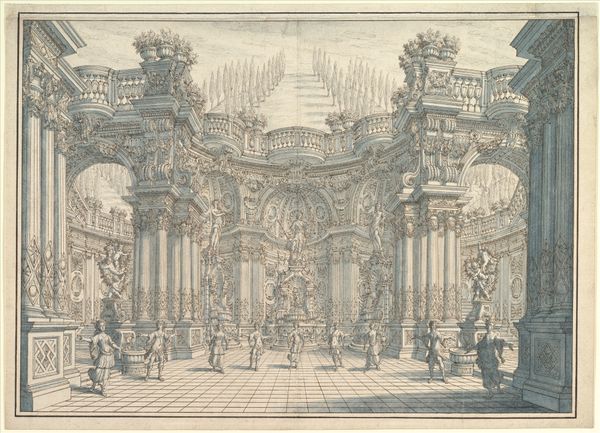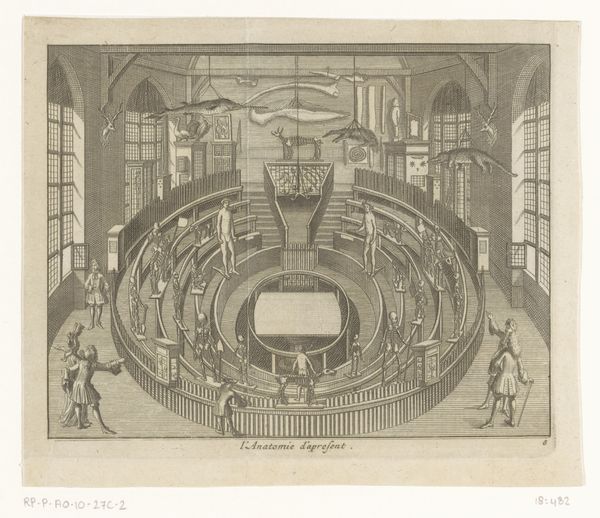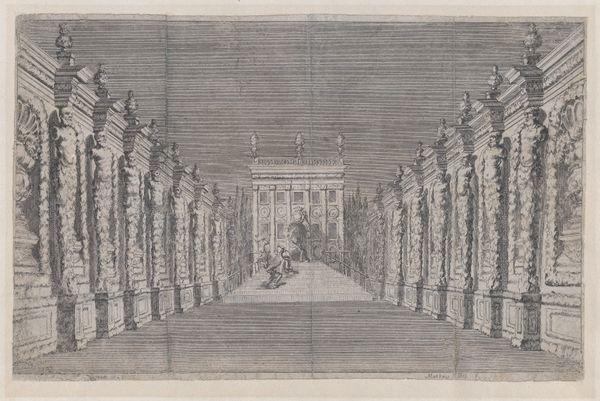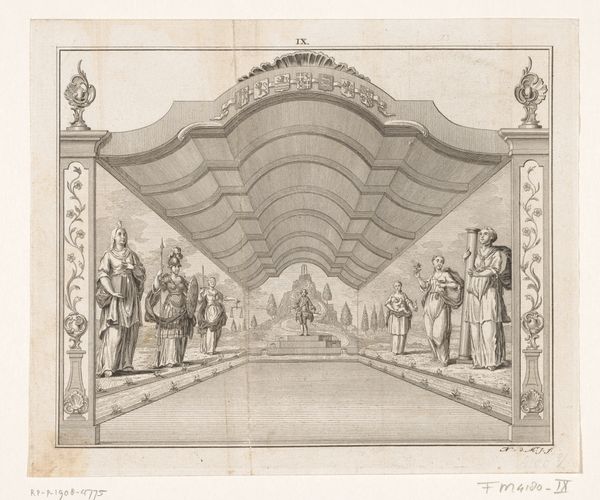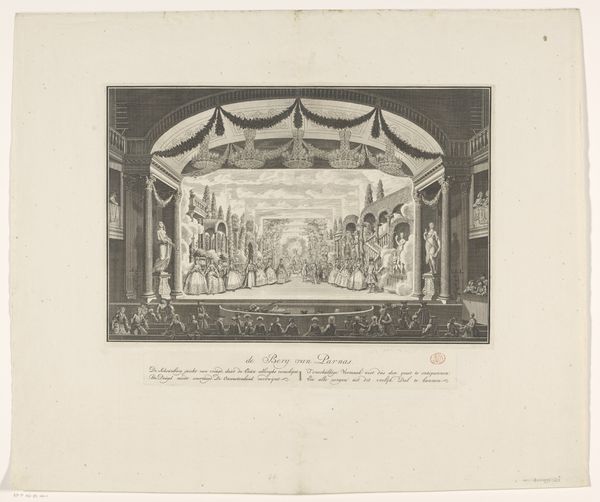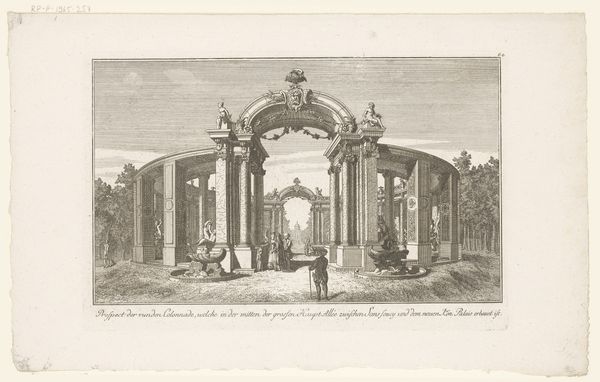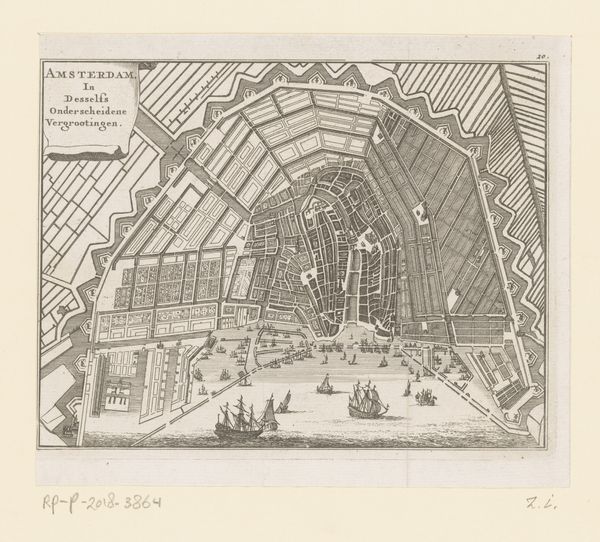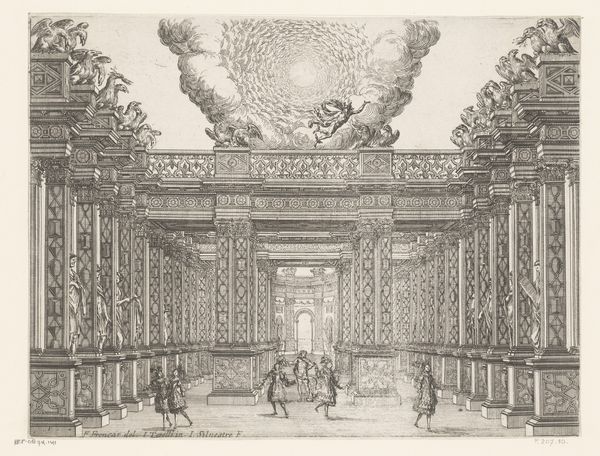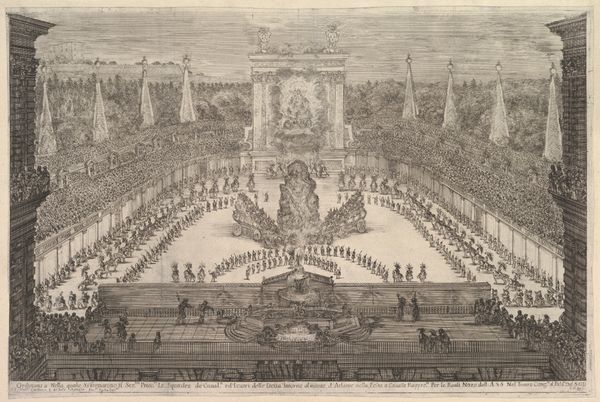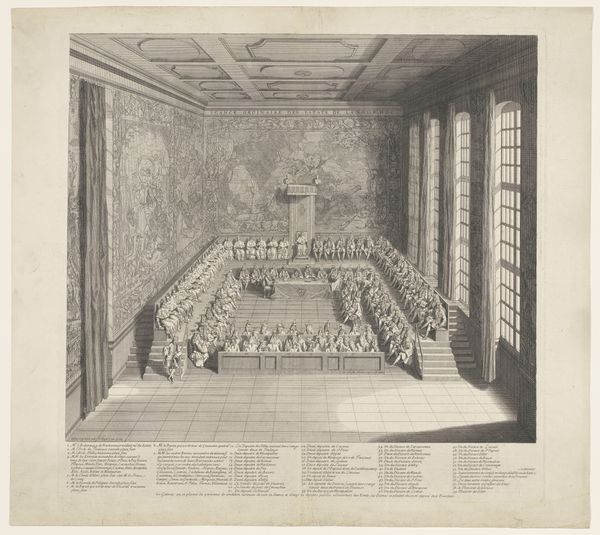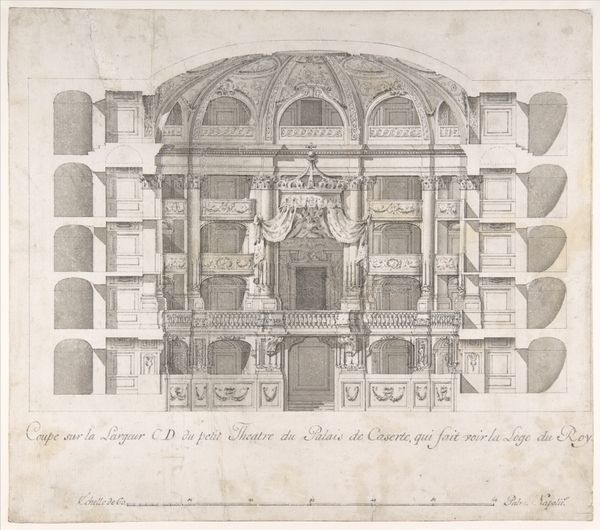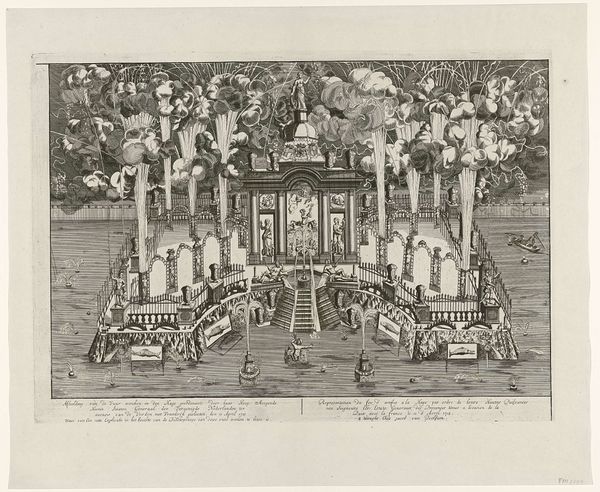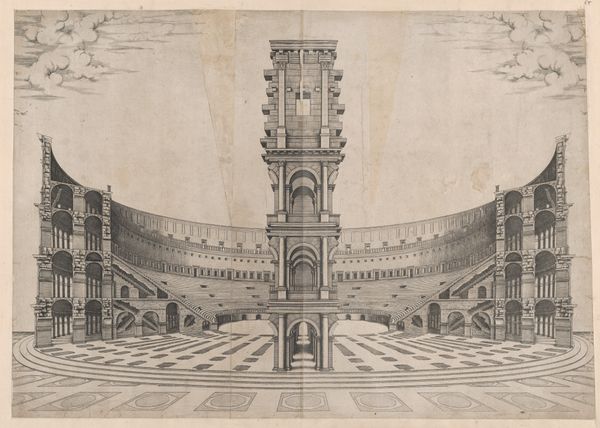
engraving, architecture
#
historical design
#
baroque
#
old engraving style
#
perspective
#
form
#
line
#
cityscape
#
history-painting
#
engraving
#
architecture
Dimensions: height 342 mm, width 510 mm
Copyright: Rijks Museum: Open Domain
Curator: At first glance, this engraving evokes a dreamscape, doesn't it? A fantastical theatre bathed in soft light, with figures perched upon clouds. Editor: It's definitely impressive! All that fine detail. It also feels staged. Almost as though the artist, Johann Andreas Pfeffel, from sometime between 1684 and 1748, is consciously presenting an idealised vision. An ideal performance. I wonder about its function? Curator: Well, it's titled "Theaterdecor", currently held at the Rijksmuseum, which gives us some context, pointing towards stage design and theatrical grandeur. But even so, the floating figures feel so detached from any lived reality. And what do they represent, these actors perched upon cloud-sculpted pedestals? Editor: That cloud framing…almost otherworldly. Considering its baroque style, could this also allude to class structure within performances, with commoners literally looking up towards nobility sitting closer to the actors and action? It brings into sharp focus issues around privilege and representation at the time. Are those figures truly witnessing, or are they symbols *of* being witnessed? Curator: Fascinating point. These clouds might denote elevated social status within the audience itself, drawing parallels between societal hierarchies. Furthermore, consider the form and line. The city, stretching into what feels like infinite space. It might represent societal aspiration, that feeling of boundlessness the powerful would claim. Editor: You can’t ignore that pervasive feeling of formality either, despite its otherworldly appearance. This historical design captures a moment that reveals artifice within entertainment itself. Perhaps in critiquing the separation of those ‘on stage’ and those within the theater? It is interesting that its perspective emphasizes *depth*, inviting you in. What do you suppose about the emptiness implied *at* the heart of it? Curator: An interesting juxtaposition of emptiness. A place where both perspective, and presumably the story the stage enacts, leads to... perhaps a revelation, but definitely some measure of vulnerability. The play needs its players, yes, but the inverse is also true. A perspective can show, can lead, but the play itself requires active vulnerability for its magic to take hold of an audience. Editor: It makes you consider, who held the gaze during this time? Who created what was deemed culturally important? Curator: Indeed, we’ve been looking at societal aspiration through theaterdecor, and it really makes me consider both its overt symbols of social importance and that vulnerable core needing recognition. Thank you. Editor: Absolutely. Looking closer reveals an invitation to re-examine hierarchies we continue to reenact, to find empathy between our collective clouds and find vulnerability with an empty stage.
Comments
No comments
Be the first to comment and join the conversation on the ultimate creative platform.
